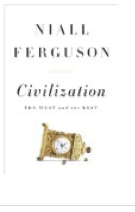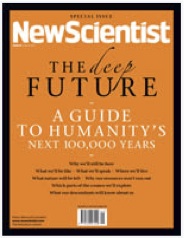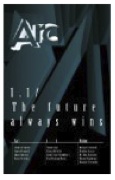 Earlier in my career, with the help of the brilliant minds of my co-workers, we in the Navy CIO office hyped the idea that “the future is so bright we gotta wear shades,” a phrase we borrowed from the 1986 song, “The future’s so bright, I gotta wear shades” by Timbuk3. In the mid nineties, the future of information technology was truly bright and the world was radically changing with the exponential growth of networks connecting we humans to our growing client-server applications, our emerging personal smart phones and our new laptop computers. Since then we have witnessed the demise of the dot com boom and the bursting of the housing bubble that ushered in the 2008 depression we are starting to crawl out from under.
Earlier in my career, with the help of the brilliant minds of my co-workers, we in the Navy CIO office hyped the idea that “the future is so bright we gotta wear shades,” a phrase we borrowed from the 1986 song, “The future’s so bright, I gotta wear shades” by Timbuk3. In the mid nineties, the future of information technology was truly bright and the world was radically changing with the exponential growth of networks connecting we humans to our growing client-server applications, our emerging personal smart phones and our new laptop computers. Since then we have witnessed the demise of the dot com boom and the bursting of the housing bubble that ushered in the 2008 depression we are starting to crawl out from under.
 What hasn’t changed is the impact and importance of technology upon our future. In Niall Ferguson’s new book Civilizations / The West and the Rest, Ferguson points out that starting from the Scientific Revolution, about 1500 AD, the West rose to a position of global prominence because of the synergy of six “killer apps” that “allowed a minority of mankind originating on the western edge of Eurasia to dominate the world for the better part of 500 years.” Niall describes the confluence of events that drove the West forward as killer apps to equate that reality to our current computer-centric view of things that matter. His killer apps are:
What hasn’t changed is the impact and importance of technology upon our future. In Niall Ferguson’s new book Civilizations / The West and the Rest, Ferguson points out that starting from the Scientific Revolution, about 1500 AD, the West rose to a position of global prominence because of the synergy of six “killer apps” that “allowed a minority of mankind originating on the western edge of Eurasia to dominate the world for the better part of 500 years.” Niall describes the confluence of events that drove the West forward as killer apps to equate that reality to our current computer-centric view of things that matter. His killer apps are:
-
- Competition
- Science
- Property Rights
- Medicine
- The Consumer Society
- The Work Ethic
In considering these killer apps, one can surmise that the growth of knowledge through the institutionalized adaptation of science was a key to the West’s success. One could argue that killer apps 1, 3, 4, 5, and 6 are but enablers to help the growth of science and the technologies it has enabled. Just as technologies have been the largest determinant of global power, new technologies have also defined the beginning and growth of the world’s largest and most wealthy companies; witness Pennsylvania Railroad and Southern Pacific Railroad that emerged in the mid 1800’s, Royal Dutch Shell and Standard Oil in the late 1800s, DOW Chemical and Monsanto in the early 1900’s, Microsoft and Apple in the 1990’s, and most recently Google and Amazon in the early 2000’s. In each case, these companies were born of newer technologies that extracted value from the emerging science of the times.
 While it is always tempting to be pulled down into the negative spiral of measuring human kinds future based upon what we know and understand today, it is instructive to remind ourselves that past luddite nay sawyers have been undermined by future technology that wasn’t visible at the time. In the March issue of the magazine NewScientist, the entire issue is dedicated to “The Deep Future” a guide to humanities next 100,000 years. In a short article by Richard Webb, he points out that basing future human failure upon the potential shortage of copper to conduct electricity, fails to allow for new inventions such as carbon fibers or other new technologies capable of addressing our human need for moving electrons as a source of heat, information, and transportation. In fact, moving electrons may also prove to be a legacy technology better addressed in the history museum than in predictions about our human future.
While it is always tempting to be pulled down into the negative spiral of measuring human kinds future based upon what we know and understand today, it is instructive to remind ourselves that past luddite nay sawyers have been undermined by future technology that wasn’t visible at the time. In the March issue of the magazine NewScientist, the entire issue is dedicated to “The Deep Future” a guide to humanities next 100,000 years. In a short article by Richard Webb, he points out that basing future human failure upon the potential shortage of copper to conduct electricity, fails to allow for new inventions such as carbon fibers or other new technologies capable of addressing our human need for moving electrons as a source of heat, information, and transportation. In fact, moving electrons may also prove to be a legacy technology better addressed in the history museum than in predictions about our human future.
 This same NewScience magazine issue also introduces an even newer magazine named Arc 1.1/The Future Always Wins. It promises to be an interesting publication. The last paragraph in the introduction of this new magazine provides a fitting summary to where the future is going to lead us:
This same NewScience magazine issue also introduces an even newer magazine named Arc 1.1/The Future Always Wins. It promises to be an interesting publication. The last paragraph in the introduction of this new magazine provides a fitting summary to where the future is going to lead us:
“We don’t know where we’re going, and we don’t know how we’ll get there. There are no maps, the brakes don’t work, the driver’s blind and the doors have no handles. Enjoy the ride.”

I like this a lot…I think it is our ability to ride now and where and how we focus our work ethic.
Interesting time we have before us…so much information but to decide what is pertinent and important in both our personal and business life is important and somewhat blurred at times.
Opportunities are out there but how to exploit and follow them can be difficult because they morph so fast.
I agree Eric, Deciding how to use one’s time when we have so many options is one of life’s biggest challenges — as I see it. marv
One interpretation of Kurtzweil’s proposed “law of accelerating change” is that predicting the future becomes impossible as we approach the “singularity” — the point where technology’s evolution becomes faster than humanity’s capacity to comprehend it. In other words, where the curvature of change becomes vertical.
The challenge with Ferguson’s “killer apps” (and futurists’ in general) is that is exceedingly difficult to discern if an innovation is fundamental or an innovation through combination . For example, is the work ethic a first-order invention or did it evolve out of what Max Weber described as a “protestant work ethic?”
To ensure our future remains bright enough to require shades, we will be well served to question the nature of innovation to ensure that we are truly changing the fundamentals — rather than just tweaking the combination of things.
Great points Olin, I didn’t go into it but Ferguson does think our work ethic was born of the Protestant influence, something that Europe, and less so the US is losing. He points out that the asian folks are working 30% more than the US and also attributes that, in part, to the rising growth of Christianity in Asia… marv
Marv,
Great article! I love the positive energy and enthusiasm. Not enough of that as I listen to people complain about “Big Data” when we should be focusing on the incredible opportunity to optimize IT for mission improvement through analytics that really focus on the user/manager/leader. Thanks!
Tony, I couldn’t agree more. I find it amusing that most folks worry about how we will connect to the clouds, with a fear that we will damage the needed afloat autonomy, rather than understanding that we need to explore the possibilities while we eliminate the challenges. marv
Yes, the FUTURE can be bright, yet it’s all relative, with a good measure of HOPE thrown in (this is apparently a new vogue acquisition term as well…;-((
While the killer apps list is nice, yet how does one measure the value from the emerging science that you mention and also see the utility of new inventions – without an end-state to gauge options, alternatives, trade-offs, what-ifs, gaps, and ultimately the “best value” sweet spot we all search for?
As we all know the well worn phrase, ‘…that if you don’t know where you are going any path will do…” yet we can’t afford to go down dark, dead-end allies either.
So what do we use to predict an end-state that then can help measure value of new inventions, technology innovations and added knowledge?
ONE aspect would be the estimated user base and sharing environment therein, say 10-20 years from now, as more than that is a SWAG at best, again, given what we don’t know we don’t know.
I happen to like 2 end state perspectives: (1) Sujata Millick’s “open world, connecting humanity / protecting our digital shores” and (2) Gary Burnette’s “ubiquity – beyond cyber” – both provide a vision on how we might support that next billion users in a world with maximum connectedness and a new definition of
“privacy”
(both briefs can be found at our cyber security summit we had on Dec 7th… http://sciap.org/blog1/?page_id=471 …)
Yes, the future is bright, but let’s not continue to admire the problems / threats, or hope for new toys, but collectively DO something about it, like agree on a common end-state we can all imagine to, assess options and ferret out that best value.
CIAO
Mike, good points and examples. Getting humans to pull is the same direction has always been the challenge. No matter what, the next twenty years are going to be interesting and most of will be here to watch:) marv
Marv;
As always a great read! Love the connections and correlations. It is very interesting that the “Killer Apps” list above has been and will continue to be the driving forces behind the movement of science and technology. While I was reading some of the posts, one came to mind above all others, the “getting humans to pull in the same direction”, Utopian at best. but if we all pulled in the same direction, innovation would not be so innovative, most likely boring at best. We tend to pull in different directions for variety, but also because the Killer Apps listed above can have the same solutions, but for very different reasons!
The future is very bright, I have some of the brightest minds working for me and they thrive on hard problems. Whenever I need to get a short look at tomorrow, I spend some time with them and the light shines through!
Just remember; Nothing is impossible, anything can be achieved, Its just software!!
There is another way to parse the 6 killer apps. Numbers 2, 3, 4 & 6 enable number 1, competion. Competition is a direct consequence of each individual’s innate desire to better self and society. Science, medicine, property rights and work ethic are tools that enable one to prevail during the competition. A consumer society provides the arena in which to compete for resources.
The question for the future then is, how do those tools get maintained and deployed? For whose competitive advantage? Are we maintaining and deploying them in an advantageous way?
Good points Jim and Ferguson makes the same points in his book. History has taught, over and over, that it isn’t government that maintains the tools if they go beyond rule of law and National Security… It will be interesting but there are some awesome technologies coming down the pipeline… marv
Great post and I look forward to the book. Your comments at the SPAWAR Industry Forum last week were fascinating. Your analogy to city planning provided a cautionary tale to the concept of an “immaculate architecture.” Perhaps we just don’t control enough of the variables to drive the outcomes to the level of precision we desire. Thank you again for the postings!
Thanks Kurt, the lesson we seem not to learn is that we are not capable of defining that over arching architecture and at the same time we are not willing to discipline the building codes that tie our information systems together. It is my belief that we don’t and won’t fix this problem because of the way we divide program funds into overly over-sighted pots that have little flexibility. Add to this fiscal situation the disconnected temporal separation of the programs and we get the continuation of suboptimal capability. marv